THE FIFTIETH ANNIVERSARY OF THE ARRIVAL OF THE CAMILLIANS IN
BURKINA FASO
Ouagadougou – Tuesday, 11 October 2016
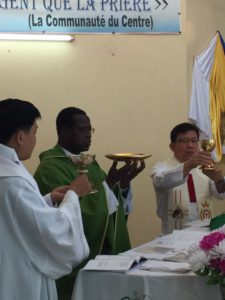 The second day of the meeting began with morning prayers and a celebration of the Eucharist presided over by Msgr. Prosper Kontiebo, a Camillian religious and the Bishop of Tenkodogo, a new diocese of Burkina Faso. He represents one of the good fruits of the fifty years of the presence of the Camillians in this African nation.
The second day of the meeting began with morning prayers and a celebration of the Eucharist presided over by Msgr. Prosper Kontiebo, a Camillian religious and the Bishop of Tenkodogo, a new diocese of Burkina Faso. He represents one of the good fruits of the fifty years of the presence of the Camillians in this African nation.
This week will also be a propitious moment for the canonical advance of the Vice-Province of Burkina Faso to having the status of a religious Province.
The morning of this second day of the meeting (chairman Fr. Aris Miranda) was dedicated to reports presented to the assembly by the individual major Superiors on their expectations and the initiatives of their Provinces and/or Delegations as regards the three priorities of the Camillian Project: economics, formation, and the animation of vocations and communication.
Summarising reference to the Camillian Project. Towards a Creative and Faithful Life
Objectives of the Project: revitalisation and restructuring
The ‘Camillian Project’ was conceived of, and drawn up, to facilitate a pathway with two inseparable tracks. From the outset these have been formulated in the following way:
- Interior revitalisation, through a personal and community commitment to spiritual discernment whose goal and horizon is:
- Exploring and savouring the essential values of Camillan consecrated life.
- Retrieving the sense of gospel radicality transmitted by the Founder.
- Proposing anew with courage and enterprise his inventiveness and charity.
- Motivating perseverance in the pathway of holiness, promoting a new culture of dynamic faithfulness.
- Renewing human and professional competence to achieve an implementation of ministry that is adapted to new situations.
- Deepening ecclesial communion and openness to lay people.
- Intensifying and renewing pastoral care for vocations …
And all of this supported by the intimate certainty of the centrality that should be given to spiritual life, lived in a more healthy fraternal life, on which should be based every present and future achievement.
- Restructuring or reorganisation, through a process that leads to:
- Reviewing the organisational structures of the Order.
- Fostering a change in mentality that makes possible and effective the necessary cooperation between the various parts of the Order.
- Optimising the resources of the Order by unifying or centralising services, above all in the field of formation.
- Unifying, amalgamating, fusing Provinces, Vice-Provinces or Delegations.
- Looking for new forms of leadership for the Order, etc.
This weighty outline highlights ‘lights and shadows’ in the various Camillian realities of the Order; tensions, challenges at the level of ideas, projects, limitations and frailties that are different according to the social and cultural realities in which people live. A religious institute inevitably moving at different speeds almost seems to emerge.
Camillians religious life in Europe is having to deal with a situation that involves the rapid ageing of the religious; small Provinces with a low number of religious rely upon the ministerial presence of Camillians who come from other parts of the world (Africa and Asia) with whom new forms of synergy and cooperation should be developed with an awareness of the diversity of the cultural horizons of departure; an animation of vocations that must take into account a social and cultural context that is strongly secularised where the fragile testimony of our consecrated lives does not manage to attract the interest and the motivations of young men; and the inheritance of large health-care institutions and works that are very difficult to manage in an efficient way at an administrative level and in a way that constitutes witness to the Camillian life.
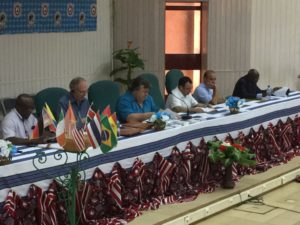 A great enthusiasm emerges in the young Camillian realities of Africa and Asia which – in realistic terms – does not conceal difficulties at the level of growth. Primary attention is paid to the field of the formation of those who provide formation and the young candidates for Camillian religious life, as well as ongoing formation especially for religious engaged in their first years of ministry. Everyone agrees on the need for formation to be directed in a serious way towards the meaning of missions: young candidates must grow in the spirit of mission. The greatest concerns are felt at an economic level, above all as regards continuity in the maintenance of institutions and activities involving formation and ministry after the ending of contributions from the ‘mother’ Provinces, which are usually European. New forms of fund raising are being organised; an attempt is being made to develop in religious a greater sense of responsibility towards goods that are already possessed in the logic of evangelical poverty; new forms of ministry are being drawn up – compatible with local health-care and social realities – that will allow new economic inflows. Cooperation with local Churches, with dioceses, and with the various Bishops’ Conferences, which greatly appreciate the professionalism and the sensitivity of the Camillians, with the request by various bishops that in their dioceses as well initiatives involving health care and formation in the world of health should be implemented, is also valuable.
A great enthusiasm emerges in the young Camillian realities of Africa and Asia which – in realistic terms – does not conceal difficulties at the level of growth. Primary attention is paid to the field of the formation of those who provide formation and the young candidates for Camillian religious life, as well as ongoing formation especially for religious engaged in their first years of ministry. Everyone agrees on the need for formation to be directed in a serious way towards the meaning of missions: young candidates must grow in the spirit of mission. The greatest concerns are felt at an economic level, above all as regards continuity in the maintenance of institutions and activities involving formation and ministry after the ending of contributions from the ‘mother’ Provinces, which are usually European. New forms of fund raising are being organised; an attempt is being made to develop in religious a greater sense of responsibility towards goods that are already possessed in the logic of evangelical poverty; new forms of ministry are being drawn up – compatible with local health-care and social realities – that will allow new economic inflows. Cooperation with local Churches, with dioceses, and with the various Bishops’ Conferences, which greatly appreciate the professionalism and the sensitivity of the Camillians, with the request by various bishops that in their dioceses as well initiatives involving health care and formation in the world of health should be implemented, is also valuable.
At the end of these papers, not only did problems and tensions emerge but also, and above all else, the question of growing in the ‘broad’ logic of the Order, overcoming exaggerated regional and Provincial attachments, with a greater synergy as regards planning, economic, financial and above all human resources…because in the end ideas must be incarnated in ministerial action and the charismatic passion of religious as individuals and as a community.
During the second part of the afternoon, Br. José Ignacio Santaolalla, the general financial administrator of the Order, presented the consolidated balance sheet of the Order that had been drawn up by the central economic commission, starting with the individual accounts of the Provinces, Vice-Provinces and Delegations and the annual accounts for the year 2015 and the budget for the year 2016 of the generalate house. He also reported on the activities of the central economic commission of the Order (Fr. G. Contarin, Fr. L. Testa, Fr. G. Scattolin and the accountant M. Iannacchino). Since its creation, after the election of the new Superior General (in 2014), this commission has met four times in Rome and since its creation two other members have been added to it (Dr. Emilio Villar and Fr. Mario Kozik). The general financial administrator reported certain observations that had been made at the time of the meeting of all the financial administrators of the Provinces and the Delegations of the Order that took place in Rome in early 2016: the aim was to describe to them, and to ‘train’ them in, the compilation of the special form of the Order in order to achieve a unified and uniform system of accounting. It was stated with satisfaction that all the Provinces and Delegations of the Order had sent in their accounts even though not all of them had done so using the standard form.
Fr. Leocir Pessini observed that a ‘new culture of accounts’ was beginning to be created in the Order in line with the spirit of the General Chapter of 2014 which had requested increasing transparency in accounting.



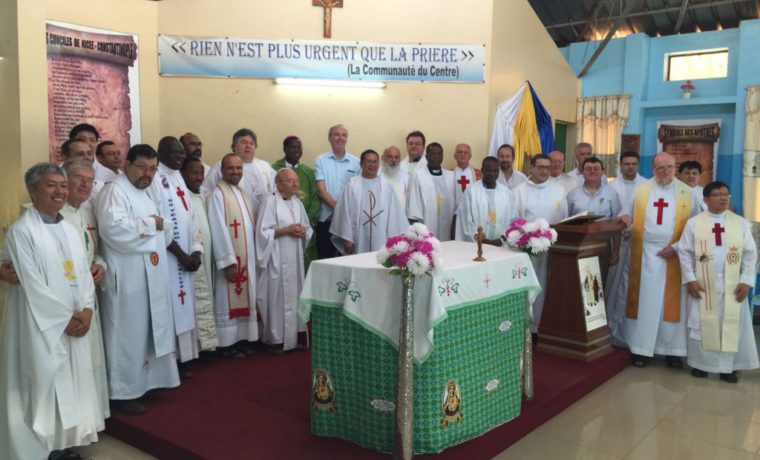
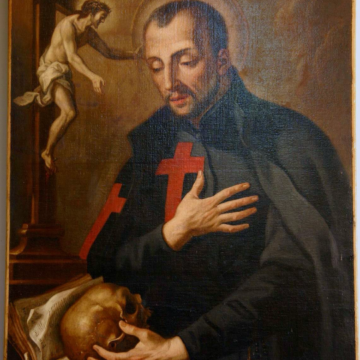

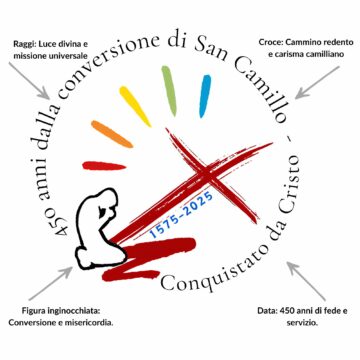


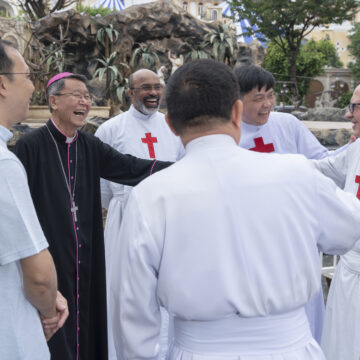

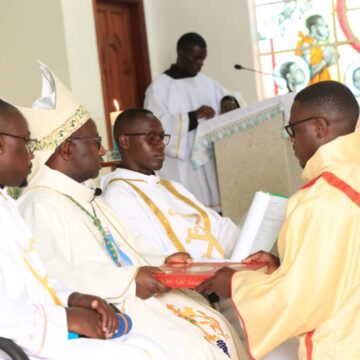
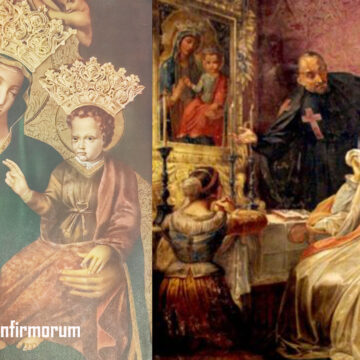
Camillians on Facebook
Camillians on Twitter
Camillians on Instagram